Bangor
In the late 1500s fur trader David Ingram sailed up the Penobscot River. He returned with a story of ‘a wealthy city whose streets were lined with gold and tall buildings with casements of silver’. In 1604 French explorer Samuel de Champlain sailed up the the river and did not find such a city, but he did find the Tarratine Indians who were ready to trade with Europeans. Trading began but there was no settlement until 1769 when Jacob Buswell from Salisbury, Massachusetts with his wife and nine children settled at the place then known as known as Kadesquit. From the 1770s sawmills were set up and the settlement grew until in 1791 the settlers decided that it should become an incorporated town. It was then part of Massachusetts so the Rev. Seth Noble travelled all the way to Boston to petition the Massachusetts General Court to incorporate the town of Sunbury. While waiting at the court Noble began whistling one of his favourite tunes, the Welsh hymn ‘Bangor’. Interrupted by a court official wanting to know the name of the town, Noble said the first thing that came into his head, ‘Bangor’. His fellow townsfolk must have been surprised when he returned and told them that they lived in Bangor. By the mid 1830s, Bangor had more than 300 sawmills, and the city was known as the ‘Lumber Capital of the World’. Nowadays Bangor is known as the Queen City, although the origin of this is unclear. We have to declare an interest in Bangor as it was were we met, but not Bangor Maine, it was the one that Rev. Noble was thinking of when he got the name wrong!
Paul Bunyan Statue, Bass Park
Nothing embodies the spirit of Bangor as a lumbar town better than the legend of lumberjack Paul Bunyan. It is thought that the stories of Paul Bunyan originated among North American loggers, but there are no records to indicate when or whether he existed. In the stories Bunyan is a lumberjack of gigantic stature and enormous strength. Bunyan stories circulated both sides of the Canadian border, but on the US side he is accompanied in the stories by a blue Ox named Babe and they are accredited with the creation of several American landmarks and natural wonders. Bangor is one of several places that claim Bunyan as their own, with Bangorians regarding the city as his birth place. To underline the claim, a huge statue of Paul Bunyan has been erected in Bass Park overlooking Main Street. The statue is 9.5 metres (31 feet) high and weighs 1,680 kg (3,700 pounds. It was designed by local artist J. Norman Martin and donated to Bangor in 1959 by New York-based builders Messmoor & Damon to celebrate the 125th anniversary of the city.
Civil War Museum, Thomas Hill House
Maine may have been a long way from the action during the Civil War but its people took an active part. The locally mustered 2nd Maine Volunteer Infantry Regiment marched out of Maine in 1861 and played a prominent part in the First Battle of Bull Run. The 1st Maine Heavy Artillery Regiment was mustered in Bangor and it lost more men than any other Union regiment, with heavy losses during the Second Battle of Petersburg in 1864. The 20th Maine Infantry Regiment held Little Round Top in the Battle of Gettysburg. having taken an active part in the war it is not surprising that there is a Civil War Museum in Bangor. The building in which it is located is a Greek Revival style home built in located 1836 for lawyer Thomas A Hill. Unfortunately Hill lost a great deal of money in the panic of 1837 and the bank foreclosed, selling the house to ship chandler Samuel Dale then later it became a doctors surgery. The Sons of Union Veterans bought the house in 1942 and named it the Grand Army of the Republic Memorial. In 1974 the house was deeded to the Bangor Historical Society who use the historic house as their headquarters as well as a Civil War Museum.
1919 Model T Ford half ton truck, Cole Land Transportation Museum
In 1917 Allie Cole began horse drawn mail, freight and passenger service between Enfield and Burlington, Maine. He called it Coles Express and by 1930 it had grown into the largest trucking business in the region. The great depression pushed the company to the verge of bankruptcy, but it survived. Coles Express grew during World War II as a result of government contracts to move equipment between military bases. In 1955 Allie Cole ded and his son Galen took over. The company continued to expand through acquisitions. In 1993 Coles Express was bought by Roadway Services Inc. In 1989 Galen Cole opened the Cole Land Transportation Museum which is dedicated to collect, preserve, and display a cross section of Maine's land transportation equipment. This is a huge museum with a wide range of transportation ranging from horse drawn to railroad. There are a few vintage Cole Express vehicles, as shown in the picture. The museum is open daily between May 1 and November 11. Click Tab 2 to see a picture of a 1927 McCann Fire Truck Model 50 Pumper or Tab 3 to see a Prairie Schooner.
DLU0180330
Click on Minimap to navigate
Home > US States > New England > Maine >
Statue of Hannibal Hamlin
The Civil War theme continues in this item. Hannibal Hamlin was born on August 27, 1809, in Paris Hill, Maine. He studied law and gained admission to the Maine bar in 1833. In 1835 he was elected to the Maine House of Representatives as a Democrat, and he ascended to the speaker's chair in 1838. In 1843 he was elected to represent Maine in the US House of Representatives and five years later he was elected as US Senator. Hamlin was strongly opposed the Democratic Party's support for slavery and in 1856 he quit the party to join the newly formed Republican Party which opposed slavery. He was elected Governor of Maine, but this was short lived as in 1857 he returned to the US Senate as a Republican. In 1860 the Republicans needed a running mate for Abraham Lincoln’s Presidential bid, and they chose Hamlin because his power base in the north east balanced Lincoln’s in Kentucky and Illinois. Hamlin had not sought the nomination, and when told about it he wrote ‘I neither expected it or desired it, but it has been made and as a faithful man to the cause, it leaves me no alternative but to accept it.’. The cause that he referred to was, of course, the abolition of slavery. Hamlin found the role of Vice President frustrating as he wanted to immediately proceed with an emancipation proclamation, but Lincoln feared that such a proclamation could fracture the Union. Lincoln changed his mind and issued a proclamation freeing all slaves on January 1, 1863. Hannibal Hamlin was left off the Republican ticket for the 1864 election. The Republicans had decided that having a southerner on the ticket would help the prospects for peace, so Hamlin was replaced by Andrew Johnson from Tennessee. Hamlin held several public offices after the Civil War, including returning to the US Senate. In 1883 he retired to his home in Bangor where he lived until his death in 1891.
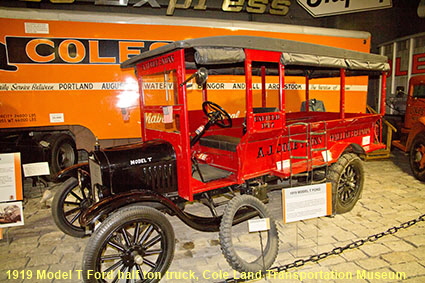
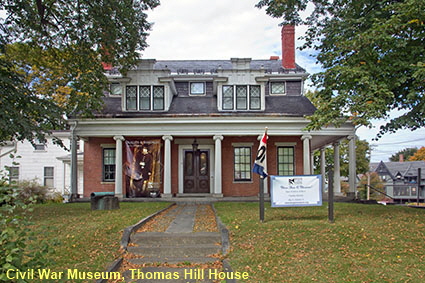


To move forwards or backwards through the Maine trail click the arrows above, or select your next destination on the Minimap.
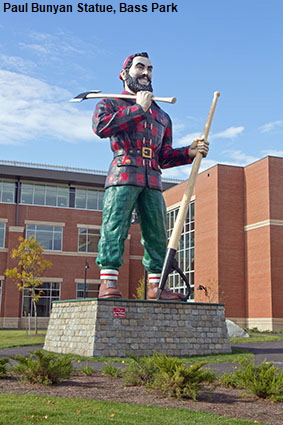
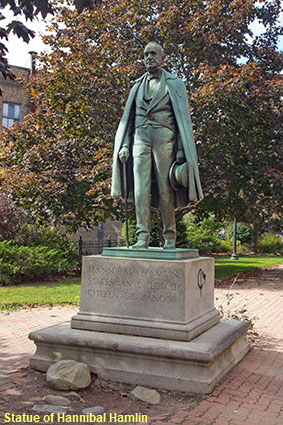
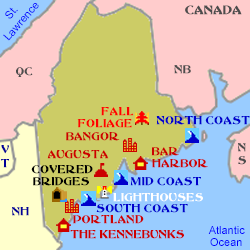

© Mike Elsden 1981 - 2025
The contents of this page may not be reproduced in full or in part without permission